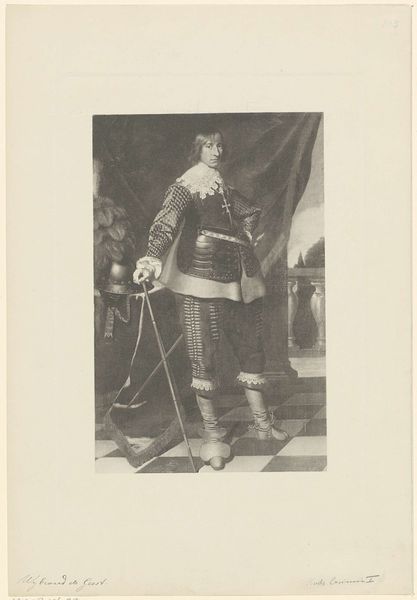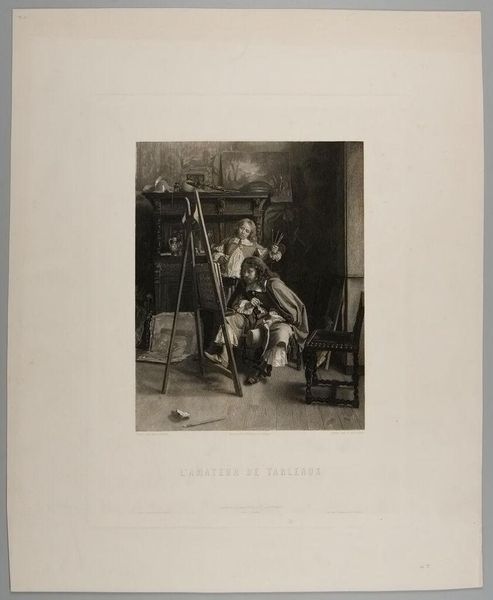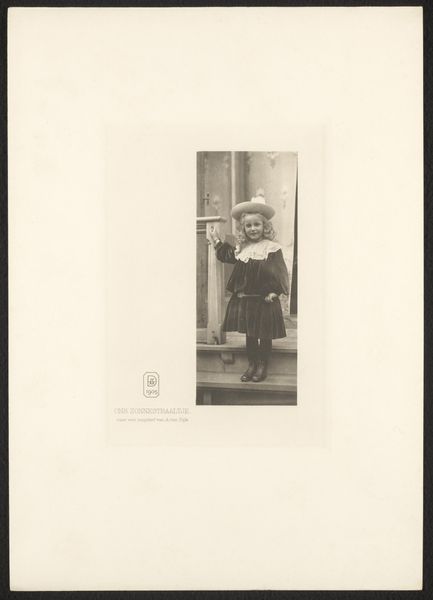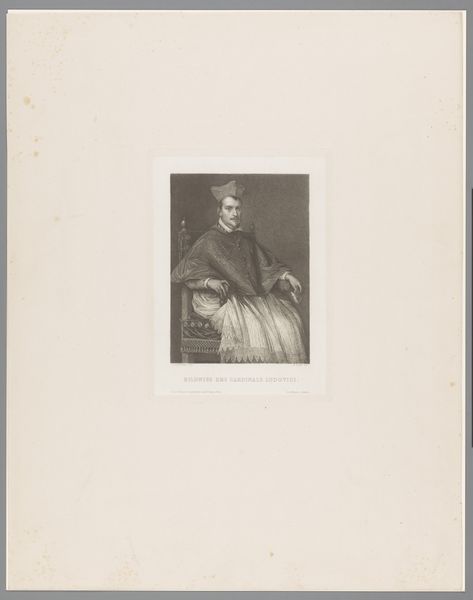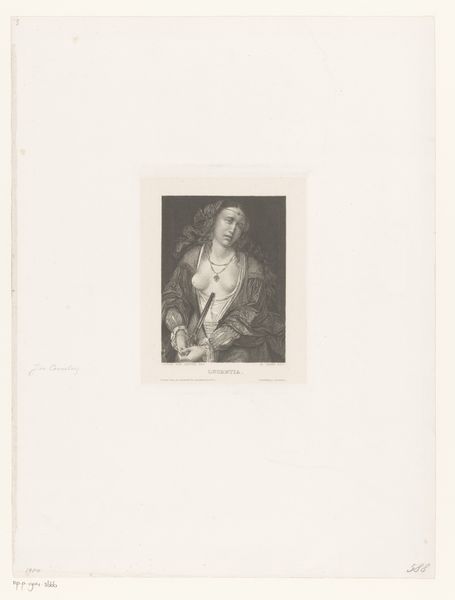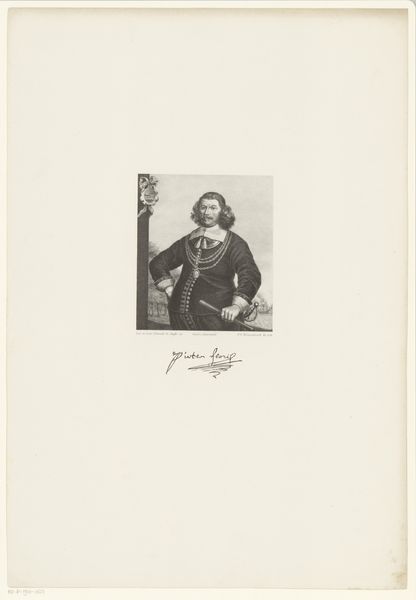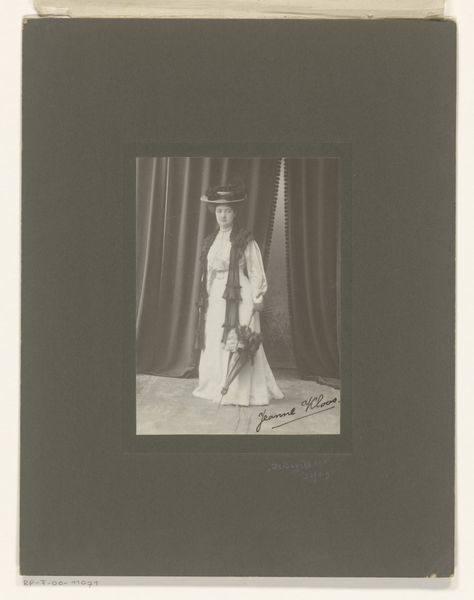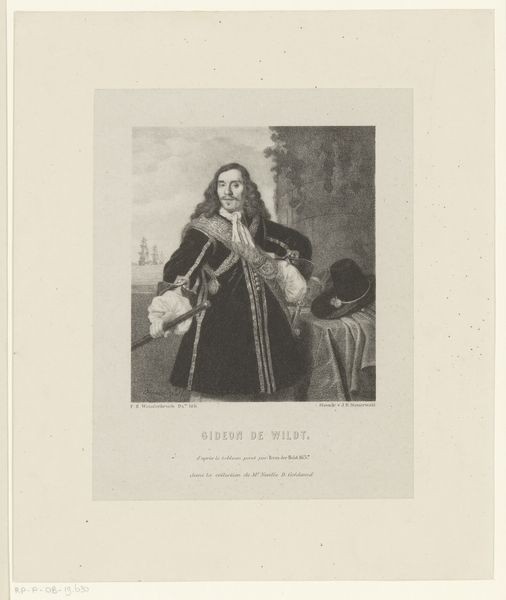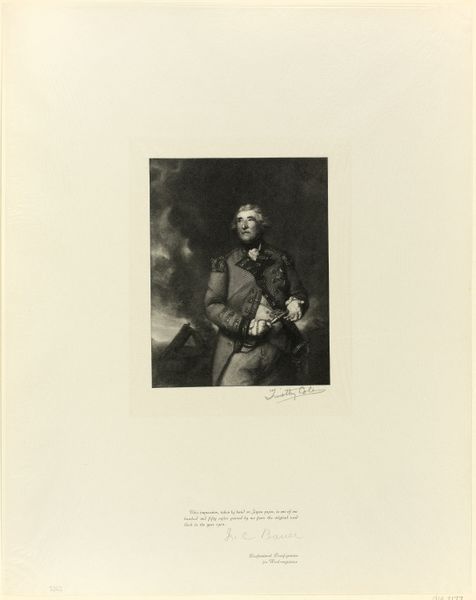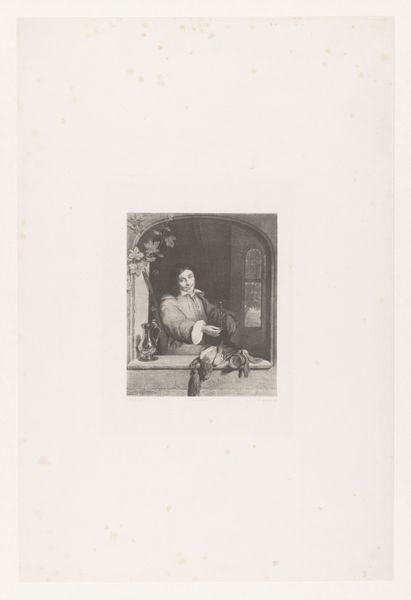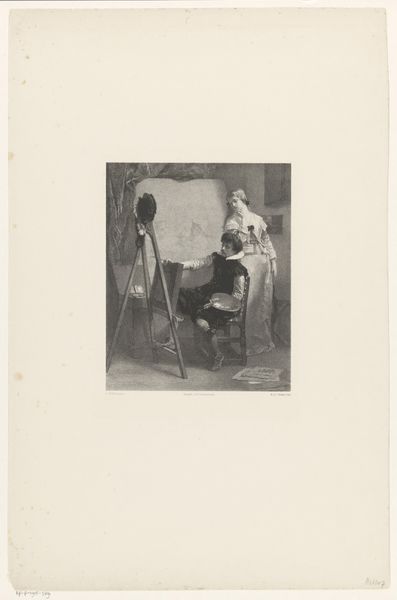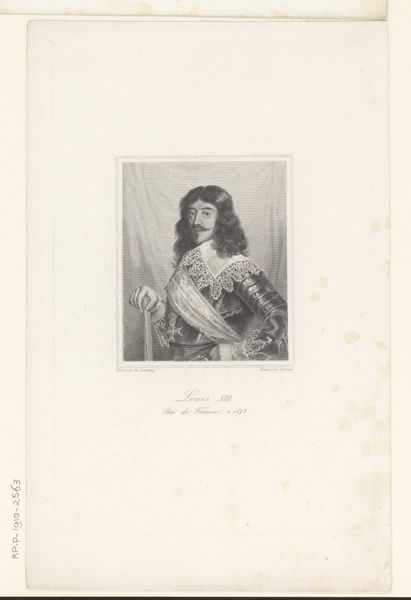
Dimensions: height 291 mm, width 222 mm
Copyright: Rijks Museum: Open Domain
Editor: Here we have a 19th-century print after a presumed Baroque portrait of Hendrik Casimir I, Count of Nassau-Dietz. The engraving has such formality about it. What historical weight is communicated through this particular rendering? Curator: That formality speaks volumes, doesn’t it? Consider the power structures at play during Hendrik Casimir’s time, and even in the 19th century when this print was created. Whose stories were deemed worthy of representation, and how were those stories shaped by the dominant ideologies of the time? Is this image working to reinforce existing hierarchies, or could it also offer a point of resistance, a way to reclaim a more nuanced narrative of the past? Editor: So it's not just about *who* is being represented, but *how* and *why*? Curator: Precisely! Look at the details – his attire, his pose, the setting. These are all carefully constructed signifiers of power and status. We need to think critically about the choices made in portraying Hendrik Casimir and what those choices tell us about the values and assumptions of the society that produced this image, centuries later. This is when feminist theory becomes essential, asking who this representation of power excludes and what role the viewer plays in maintaining these historical narratives. Editor: It's interesting to think about art not just as a record, but as an active participant in shaping our understanding of history. Curator: Absolutely! And by examining these works through a critical lens, we can begin to unpack the complexities of power, identity, and representation, even within seemingly straightforward historical portraits. We're not just looking at a picture of a count; we're engaging with the politics of image-making itself. Editor: This gives me so much to consider; thank you for that new lens! Curator: My pleasure! I think understanding the multiple layers allows us to come to more meaningful conclusions about art.
Comments
No comments
Be the first to comment and join the conversation on the ultimate creative platform.
